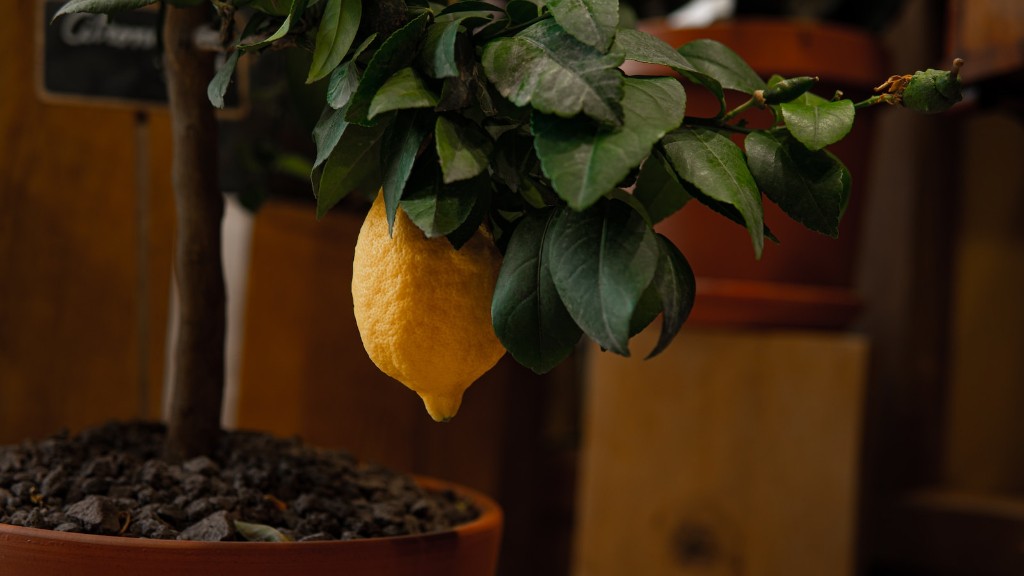Fruiting Meyer lemon trees provide a yearly yield of citrus fruits with a unique flavor unlike traditional lemons. Knowing how to get them to produce fruit is simple once you understand their growing needs. Cultivating a Meyer lemon tree for the possibility of delicious fruits requires dedication and appropriate care throughout the year. This guide provides tips on how to get your Meyer lemon tree to yield the most delicious fruits.
For the tree to start producing these sweet and sour treats, it must receive ample sun, water, and nutrients. Meyer lemon trees grow best when given five or more hours of direct sunlight each day, watered regularly, and given fertilizer every four to six weeks. To enhance the soil surrounding the tree, incorporate organic material into the surface layer.
Adequate pruning is essential in maintaining and encouraging growth in any tree. When Meyer lemon trees are in bloom, the petals must be removed to allow for development of the fruits. Removing spent flowers and weak or damaged branches may be necessary for the tree to remain healthy and offer better fruit production.
It is best to use intercropping, by alternating Meyer lemon trees with other fruit trees such as oranges, limes, and grapefruit. Competing for light, nutrients, and water intercropped trees focus on producing less, but higher quality fruits. This will encourage the Meyer lemon tree to give sweeter and tastier fruits.
To support the tree and protect it from weather conditions it is important to observe some pest and disease warning signs. Common pests and diseases such as aphids, scale, lemon tree borer and fruit fly can be controlled by using regular applications of a pesticide, fungicide or insecticide suitable for citrus.
Meyer lemon trees will thrive best when in the right environment. A good starting point is to select an area that has well-draining soil and good air circulation, as these two factors are essential for proper growth and fruit production. Ideal temperatures for growth range from ten to thirty degrees Celsius.
Proper Pollination
Although bee-pollinated, pollination will also occur when pollen is dispersed manually. Meyer lemon trees are self-pollinating, which relieves the need to have another nearby citrus tree. To ensure successful pollination when the tree is in bloom, gently shake the branches frequently or clip a small, soft brush to the end of a long pole and lightly brush the flowers. Doing this will stimulate the production of nectar and transfer the pollen.
Fruit Thinning and Harvesting
Fruits set in clusters and require thinning when they reach walnut-size. Waiting until the last minute to thin the fruit encourages maximum flowering and can result in a larger harvest. If left unattended, the tree may become over-weighted and that can lead to limb breakage and slowed production. To thin the fruits, cut them away from their stems with a pair of scissors and leave the ones that are oversized and healthy. It’s not possible to thin all the fruit at once, so thinning should be done incrementally.
At the right time, harvesting is as simple as plucking a piece of fruit from the tree. The fruits should be picked when they’re almost ripe and then left to rest indoors until they’re completely yellow. After a few days, they’ll be ready to be peeled and enjoyed.
Fertilizing the Tree
Meyer lemon trees have different nutritional needs throughout the year. To provide effective nutrition, a balanced fertilizer should be used to ensure rich soil and stimulate the tree’s growth. Ammonium sulfate, urea, and potassium chloride are often used as fertilizers intended to stimulate the tree’s foliage, flowers and fruit. Time-release granule fertilizers are a great option; they are applied every two to three months and release the necessary nutrients slowly over time. It’s important to know that applying fertilizer more often than necessary will lead to nutrient imbalance and excessive growth.
Protecting from Frost and Low Temperatures
Being tropical in origin, Meyer lemon trees cannot stand extreme cold. When temperatures reach below freezing point (4.4°C), the tree is damaged, leading to suspected flowers and fruits. To avoid this type of damage, Meyer lemon trees should be voluntarily protected when temperatures dip to 10°C. To do this, cover the branches and leaves with a cloth or sheet. An absolute sure-fire protection is to place the tree in a protected area inside a greenhouse or a frost-free room. Additionally, laying the trees on the ground is a good way to warm the roots and encourage better resistance to low temperatures.
Encouraging Flower and Fruit Production
Even after providing all the basic needs, Meyer lemon trees may take a few years before they begin to bear fruit. Continuous monitoring of the tree for pests and diseases, making sure the tree is properly pruned and fertilized, and allowing the tree to receive ample sunlight are all necessary for encouraging the health and fertility of the tree. Lastly, chemical sprays and other growth-inducing solutions can also be used to stimulate blooms and fruit-set.


